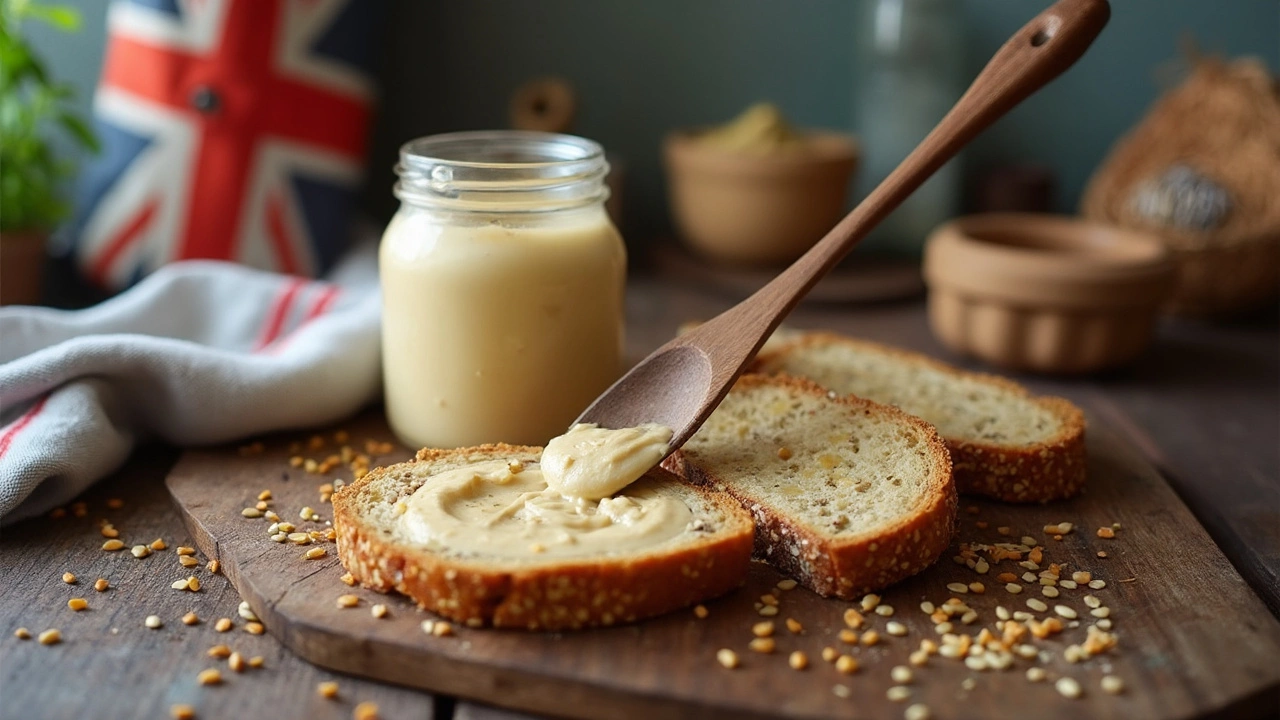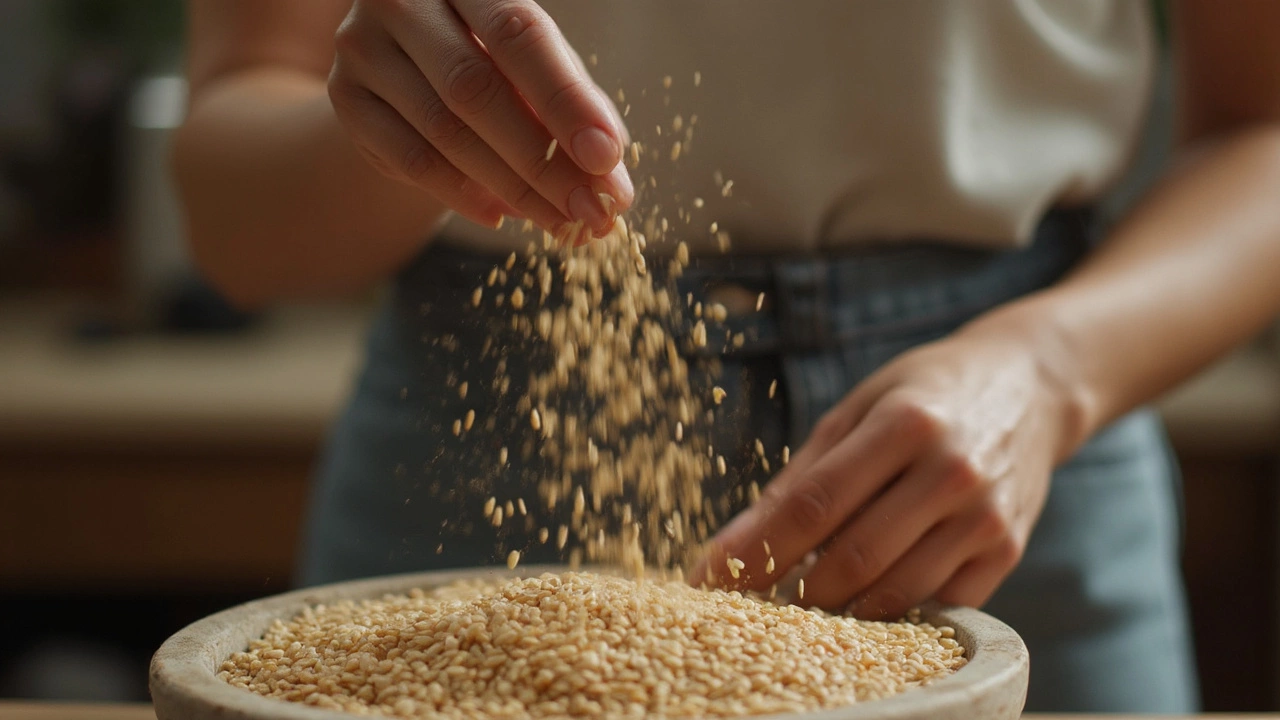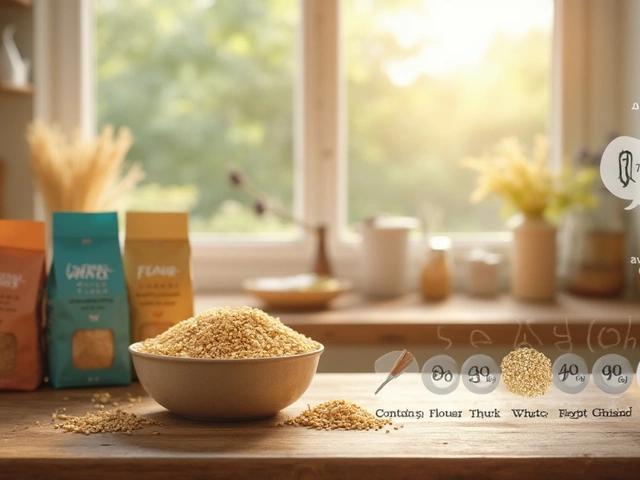
Ever tried dipping warm pita in a creamy, nutty spread and wondered if that swirl of tahini has any gluten hiding in it? For anyone living gluten-free, a question like this matters way more than most people realize. Accidentally eating even a little gluten can turn a happy meal into a disaster, so every label, every ingredient, and every spoonful counts. You want your hummus just right—smooth, full of flavor, and absolutely, positively safe. So, does tahini have gluten, or is it a worry-free addition to your snacks and sauces?
What Exactly Is Tahini and How Is It Made?
Tahini comes straight from hulled sesame seeds. To make it, manufacturers usually toast these tiny seeds, then grind them into a smooth paste. Some places use raw seeds for a slightly milder taste, but either way, sesame seeds themselves don’t contain gluten. There’s nothing wheat-like lurking in these seeds. Sesame is completely unrelated to wheat, rye, barley, or any of those infamous gluten grains.
Most of the time, the ingredient list on a jar of tahini is just one word—"sesame seeds." Sometimes, a little salt or oil sneaks in, but gluten? No. The traditional method, especially in Mediterranean and Middle Eastern kitchens, is simple and time-honored. They toast, grind, and sometimes mill the seeds until everything is luxuriously smooth.
When it’s made this way, tahini is naturally gluten-free. Want to see what’s inside? Just look at the ingredients section of your favorite brands, and you’ll usually see nothing suspicious. Fun fact: Sesame seeds are so dense, you only need a small amount for an intense flavor punch. That’s why you’ll see “100% sesame” on the best jars from Lebanon, Israel, or Greece.
You can even whip up your own at home. Toss sesame seeds into a food processor, add a drizzle of olive oil for silkiness, and blitz till smooth. In a homemade batch, there’s zero risk of gluten unless your kitchen tools are already contaminated.
Just remember, not every store-bought tahini is made in a single-ingredient, dedicated facility. Some brands crank out nut butters, spreads, and even foods with wheat on the same lines they use for tahini. That’s when cross-contact can happen. Not common, but definitely possible. If you’re ultra-sensitive, you’ll need to check labels or contact brands. I tracked down a 2024 consumer survey: about 29% of people with celiac or gluten sensitivity say they only buy tahini that is certified gluten-free.
Want to up your tahini game? Try drizzling it in salad dressings, using it as a base for sauces, or swirling it through brownies. It adds a nutty depth to just about everything.
Does Tahini Ever Contain Gluten?
This is where things get trickier. Brands want to keep their labels short and their process clean, but modern manufacturing isn’t always so pure. Here are three spots to watch for hidden gluten in tahini:
- Shared Equipment: Many factories juggle nut butters, spreads, and flours on the same machinery. If wheat crackers, cookies, or bread run through the line before or after tahini, trace gluten can hitch a ride. You won’t see “wheat” on the ingredient list, but it could be there anyway.
- Flavor Additives: Occasionally, you’ll run into brands that jazz up tahini with added flavors, emulsifiers, thickeners, or even wheat-based stabilizers. These aren’t traditional, but they do show up, especially in shelf-stable products or squeeze bottles.
- Bulk Bins: Buying tahini or sesame paste from bulk bins? It’s more likely to pick up stray gluten from people inspecting or scooping neighboring wheat products. That spoon you see in the tahini bin? It’s probably been in something else.
So, what can you do? Look for "certified gluten-free" labels, which means an independent company has tested the product for gluten. Most certification standards max out at 20 parts per million (ppm) of gluten—the safe threshold for most people with celiac. Want to see the numbers? Here’s a 2024 chart from major gluten-free watchdog groups, comparing different leading brands:
| Brand | Certified Gluten-Free? | Reported Gluten Level (ppm) | Main Ingredients |
|---|---|---|---|
| Al Wadi | No | Less than 10 | Sesame seeds |
| Soom Foods | Yes | Not Detected | Sesame seeds |
| Joyva | No | 12 | Sesame seeds |
| Baron's | Yes | Not Detected | Sesame seeds, salt |
Notice a pattern? Those with certification and clean ingredient lists tend to have zero or undetectable gluten. Still, if you can’t find certified tahini, look for glass jars rather than plastic tubs (glass often signals a cleaner process). Avoid anything with mystery “spices” or “flavorings” as undefined extras. Brands like Soom and Baron’s specifically test for gluten, while old-school imports may not.
Feel like the odds are stacked against you? Not even close. Most plain tahini is safe for gluten-free folks, especially if you're careful about sourcing.

Is Tahini Safe for People with Celiac Disease or Gluten Sensitivity?
For those of us with celiac or a pretty strong gluten sensitivity, knowing your tahini is truly gluten-free feels a bit like winning a food lottery. Flare-ups from trace gluten aren’t just uncomfortable—they can wreck a whole week. This is why it’s smart not to take any chances, even for a single dip or spread.
If you’re buying tahini and you’ve got serious gluten worries, always check the packaging for two things: the actual ingredient list (you want nothing but sesame seeds or sesame and salt), and any allergen warnings. Watch for lines like “manufactured in a facility that also processes wheat.” Does it mean gluten is definitely there? Not always, but the company is telling you there’s a chance.
Here’s a tip a lot of newly gluten-free folks forget: Save an empty jar of a certified gluten-free tahini brand, take a picture of its label, and keep it on your phone. This way you can always compare if you need to buy from a new store, or if the recipe suddenly changes. Some companies switch their suppliers or their equipment, and with new versions, there’s a chance the rules have changed.
If your local shop doesn’t offer certified gluten-free tahini, and you’re not celiac (but still sensitive), play it safe by buying jars sealed and factory-packed, rather than unsealed tubs or food service containers. Open-air markets—love them for produce, but maybe not for spreads if you need strict GF.
Sure, you’ll encounter the rare café that whips up homemade tahini in a back kitchen. Ask questions: Do they make bread or wheat dishes in the same blenders or processors? Have they cleaned the machines between uses with wheat and tahini? If the answers make you nervous, stick with packaged.
If you’re wondering about prepared foods like hummus, baba ghanoush, and dipping sauces—most are tahini-based, but check the label or ask. Some commercial products add flour, breadcrumbs, or other thickeners where you wouldn’t expect. Bring your own dipper and know your food brands, and you’ll stay in control.
How to Safely Enjoy Tahini on a Gluten-Free Diet
Want to make the most of tahini in your gluten-free kitchen? Start building a no-stress, flavor-packed arsenal of snacks and meals with this creamy sesame superstar. First, buy from reliable brands—look for that gluten-free stamp if possible. Online retailers specializing in gluten-free groceries often carry trusted names, and you’ll find helpful reviews from other people living gluten-free.
Homemade tahini is seriously easy: Just roast sesame seeds on a baking tray (about 10 minutes at 350°F), let them cool, then blend with a little neutral oil in a food processor. You get all the flavor, zero risk, and way less cost. Bonus: Your kitchen smells amazing while those seeds toast.
Want some gluten-free recipe ideas? Drizzle tahini over roasted veggies, use it as a salad dressing base (mix with lemon juice, garlic, salt, and warm water), or whip up a creamy garlic sauce for grain bowls. It shines as a nut-butter swap for those with peanut allergies, too. And you can stir a spoonful into yogurt for a quick, protein-rich breakfast.
Your bread choices matter. Grab gluten-free pita or flatbreads if you want the real Middle Eastern experience, or go for rice cakes if you love the crunch without the wheat. Don’t cross-spread with knives used on regular bread—tiny crumbs add up for people who are ultra-sensitive.
Throwing a party? Label all dips and sauces, and keep them separate from gluten-heavy appetizers. Want to sound like a tahini pro? Tell guests it’s what puts the “creamy” in hummus and “zing” in babaganoush. They’ll never guess how easy it is.
Can you freeze tahini? Yes! It keeps for up to six months. If you buy in bulk, store extra in freezer-safe jars and thaw as needed. Give it a good stir because separation is natural—nothing to do with gluten, just sesame oil being itself.
For anyone eating out, Mediterranean and vegan restaurants are your best bet, but still, double-check with the kitchen. Most chains have separate allergen menus online, so you can search "tahini" and "gluten" from your phone before you go.
Bottom line: Real, pure tahini doesn’t have gluten, but never trust the label alone. Read everything, ask smart questions, and choose your brands wisely. Have fun experimenting—you might never see a bottle of ranch the same way again!











Write a comment